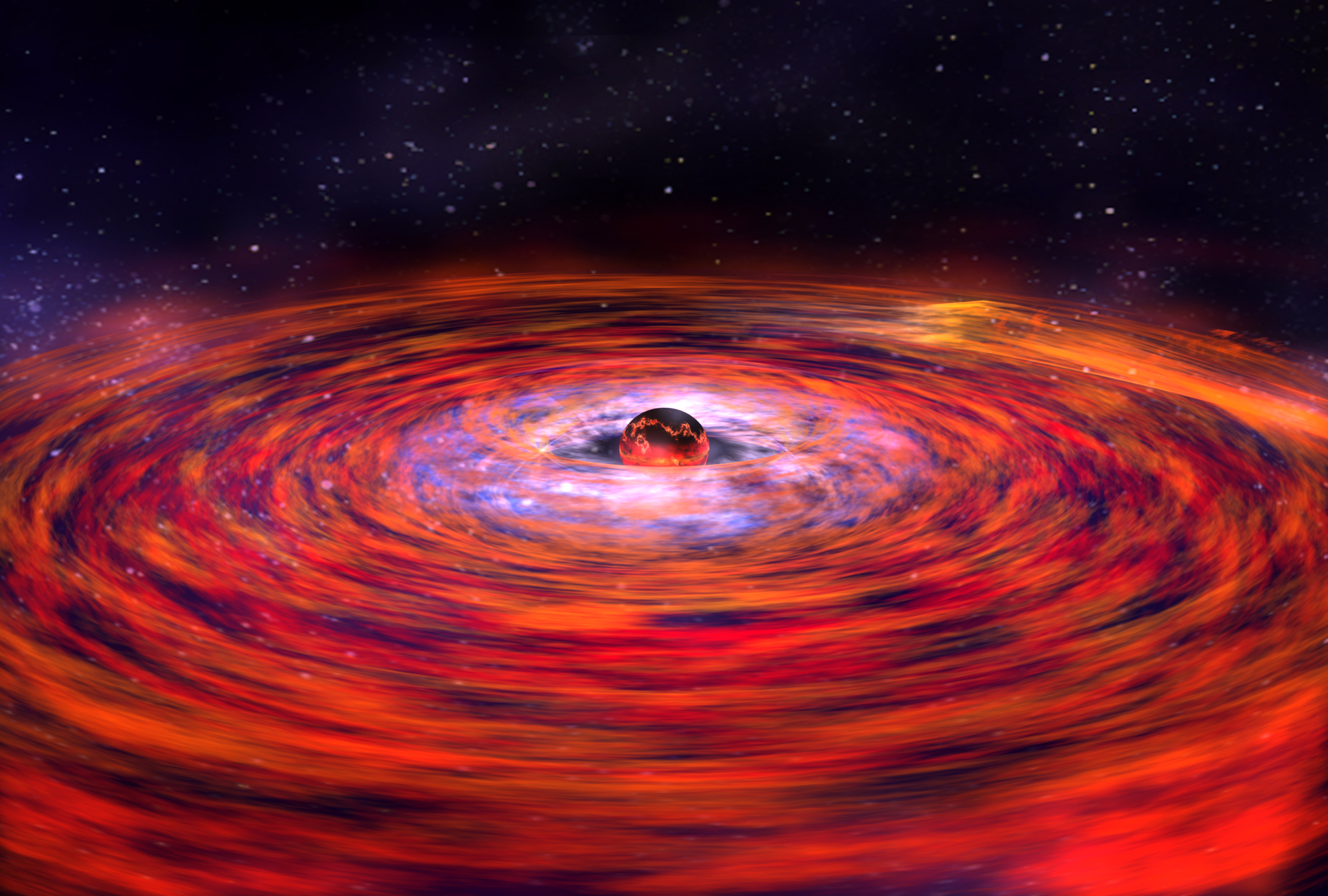Astronomers Decode Weird X-Ray Pattern Coming from Neutron Star
Those X-ray blasts are coming in a strange pattern, and that pattern has lasted for months.

Astronomers have detected a rare pattern in the X-ray bursts coming from a neutron-star system no more than 16,300 light-years away.
That star system, MAXI J1621−501, first turned up on Oct. 9, 2017, in data from the Swift/XRT Deep Galactic Plane Survey as an odd point in space flashing unpredictably with X-rays. That was a sign, researchers wrote in a new paper, of a binary system containing both a normal star and either a neutron star or black hole. Both neutron stars and black holes can create unpredictable X-ray patterns as they absorb matter from their companion stars, but in very different ways.
In black holes, as Live Science has previously reported, the X-rays come from matter accelerating to extreme speeds and generating enormous friction as it falls toward the gravity well. In neutron stars — superdense corpses of giant stars that exploded but haven't collapsed into singularities — the X-rays come from thermonuclear explosions on their outer crusts. Something is causing atoms to fuse on the outermost parts of these strange stars, releasing enormous energies usually found only deep inside stars (as well as in the cores of powerful hydrogen bombs). Some of that energy escapes as X-ray light.
Related: The 12 Strangest Objects in the Universe
As matter from a normal star smashes into a supertiny, superheavy neutron star, these thermonuclear explosions create mushroom clouds bright enough to see with X-ray telescopes. The authors of this new paper, released online Aug. 13 in the preprint journal arXiv, show that the X-ray outbursts from MAXI J1621−501 are coming from thermonuclear explosions on the surface of the duo’s neutron star — and that the light from those thermonuclear explosions is following a pattern that repeats roughly every 78 days.
The source of that pattern isn't entirely clear. Scientists have only found about 30 other lights in space that flicker this way, the researchers wrote. They refer to patterns like this one as "superorbital periods." That's because the pattern follows a cycle that lasts much longer than the binary stars' orbit around one another, which in the case of MAXI J1621−501 takes just 3 to 20 hours.
The best explanation for this 78-day period, the authors wrote, comes from a paper published in the journal Monthly Notices of the Royal Astronomical Society in 1999. Neutron stars in binary systems like this one, the authors wrote, are surrounded by whirling clouds of material that gets sucked off the regular star and toward the neutron star, creating a spinning, gassy skirt called an accretion disk.
Sign up for the Live Science daily newsletter now
Get the world’s most fascinating discoveries delivered straight to your inbox.
A simple model of those cloud disks suggests they are always aligned in one direction — they would look just like the rings circling Saturn if you were to follow the planet around in space, staring edge-on at the rings. In that model, you'd never see any change in the X-ray light, because you’d always be staring at the same spot on the accretion disk between you and the neutron star. The only change to the light would come from changes in the thermonuclear explosions themselves.
But reality is more complicated. What's likely happening, the authors wrote, is that the whirling disk around the neutron star in this binary system is wobbling from the perspective of Earth, like a top about to tip over. Sometimes the wobble puts more disk between the neutron star and Earth, sometimes less. We can't see the disk itself. But if that wobble is happening and it causes the disk to cross between us and the star every 78 days, it would create the pattern astronomers have observed.
Astronomers watched MAXI J1621−501 for 15 months after the 2017 discovery, the researchers wrote, and saw the pattern repeat six times. It didn't repeat perfectly, and there were other, smaller dips in the X-ray light. But the wobbling disk remains far and away the best possible explanation for this weird X-ray pattern in space.
- The Most Massive Numbers in Existence
- The 11 Biggest Unanswered Questions About Dark Matter
- Stephen Hawking's Most Far-Out Ideas About Black Holes
Originally published on Live Science.










